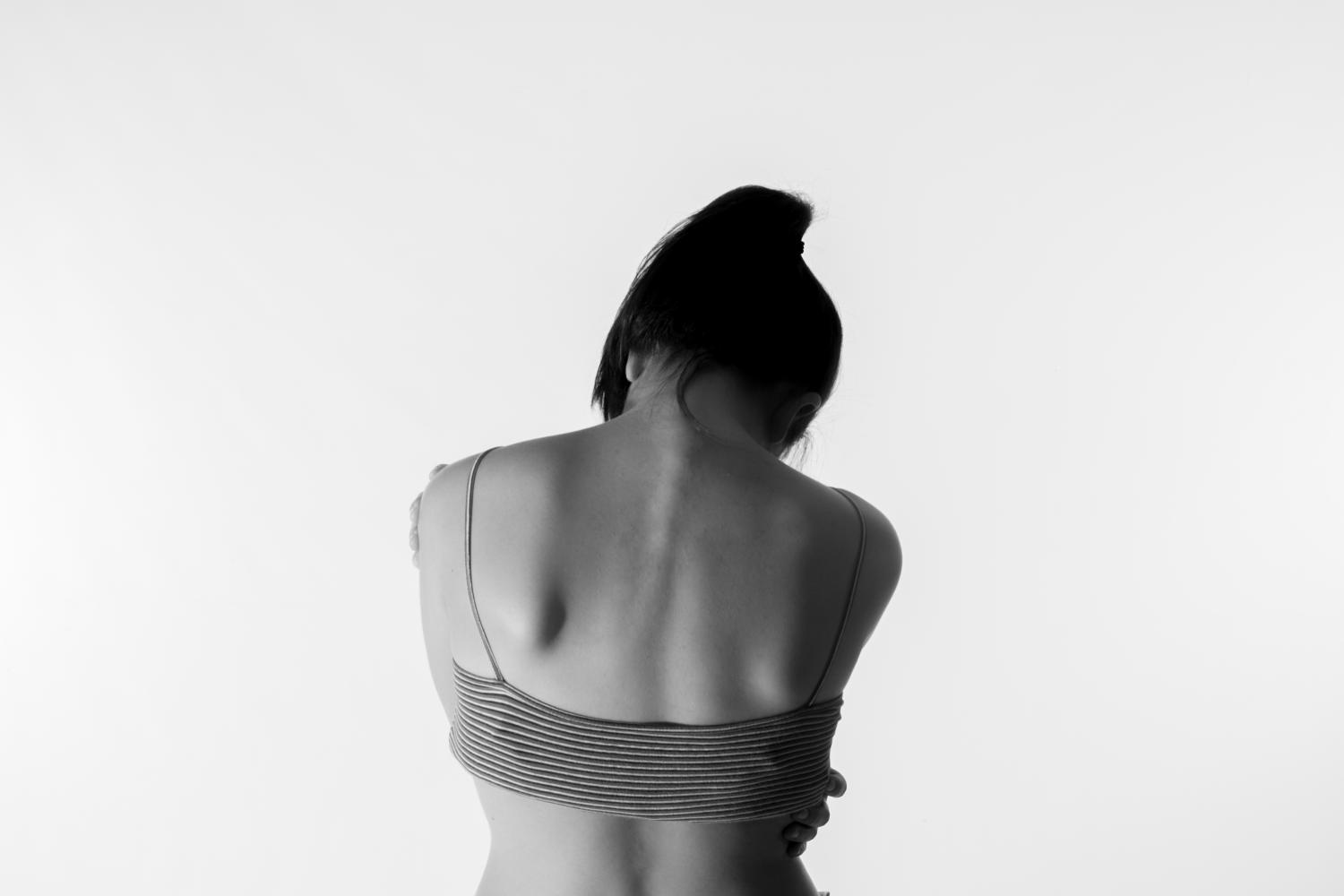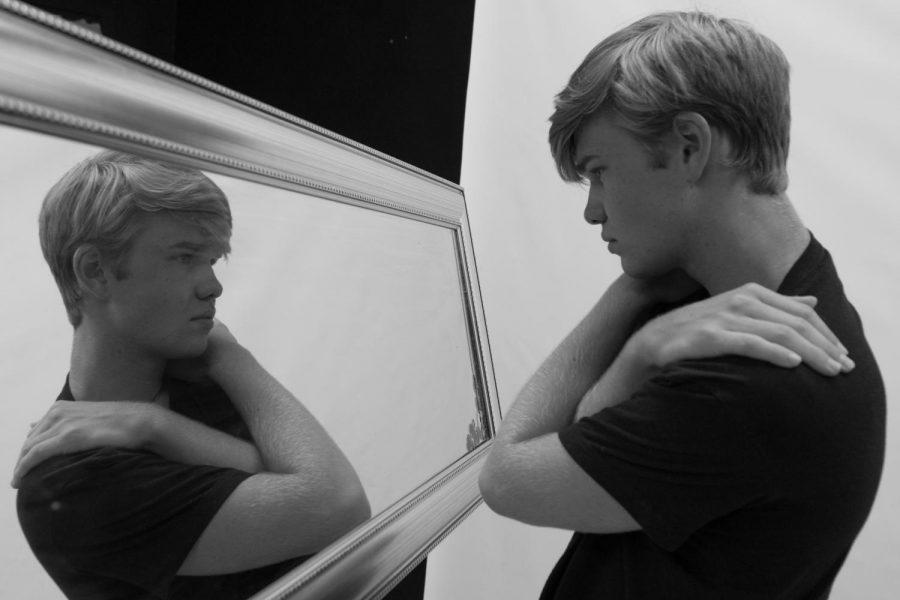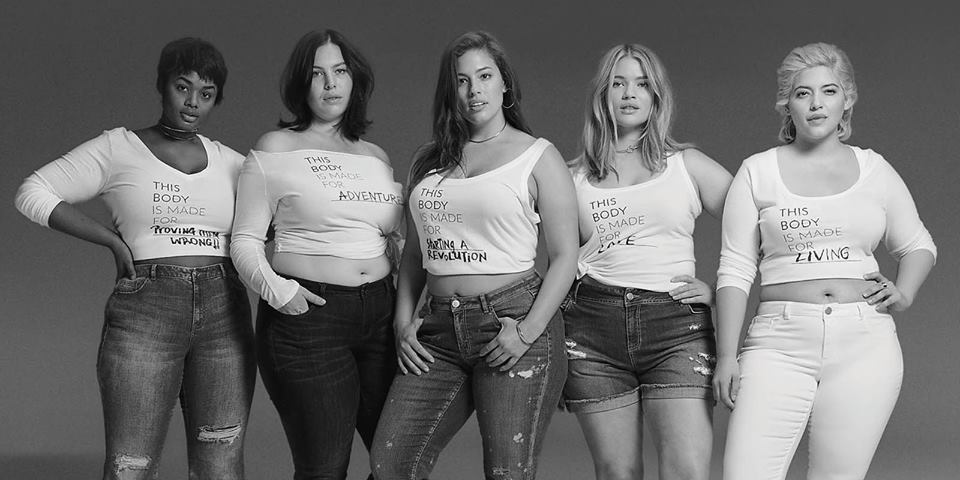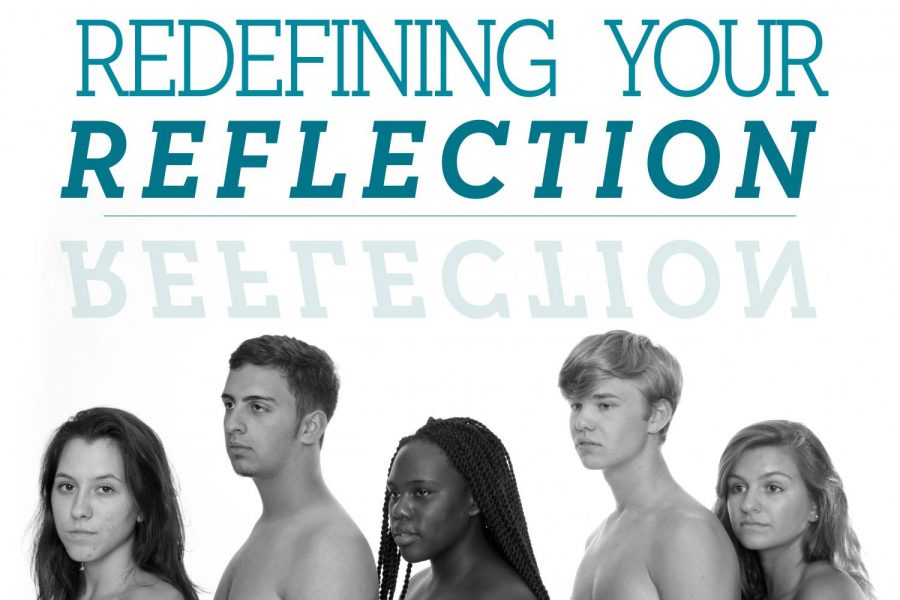Redefining your reflection
September 5, 2017
In a world that is surrounded with cameras and instantaneous documentation, it is easy to become consumed with what is considered “beautiful.” However, many do not take into consideration that every person has a different body, and that being “different” is what makes the world diverse. It’s what catalyzes acceptance and generates innovating ideas; it is the epitome of evolving into something that is revolutionary. Our generation has the ability to rediscover the meaning of beauty, and from there, we can morph into something truly profound.

Splashing into the deep
She steps onto the wet staircase that leads into the warm blue pool. She feels nervous. She couldn’t really comprehend her feelings at the moment. Wearing a cute green pinup-like swimsuit, she starts to swim in the pool. She knows she doesn’t look perfect, but the camera flashes anyways. Would she get mean comments if she posted this? Should she feel like she would need to take it down immediately?
She didn’t want to think of those questions right now. She strikes a cute pose as her friend is taking a picture of her. Ready for the world to see how beautiful she is by defying social media standards.
For many years there has been a social trend that has influenced the way young men and women see themselves today. Magazine covers typically show off summer-time trends with women in small bikinis, shiny airbrushed skin and toned legs. No imperfections. Magazines also show men shirtless with a very muscular body and tall structure. No imperfections.
Adolescents tend to look at these models from magazine covers and strive to be just like them. However, as they get older they tend to judge themselves because of the high expectations society has put on them regarding appearance.
Often times, viewers see these models as perfect. Are they perfect, or are they unrealistic expectations? Everyone has their own understanding. These distorted views of what the perfect body is has become a social standard near impossible to reach. This is an unbearable issue in today’s atmosphere.
Studies have shown that 80% of women who see images of women on the media makes them feel insecure while compared to women, 25% of teenage boys have reported about being teased about their weight. Lastly, 81% of children who are 10 are afraid of being fat.
A child should never be afraid of what weight they are, a 10-year-old should enjoy the sun, enjoy their childhood, and feel bliss. What kids, teenagers, adults, even elders don’t realize is that they should be comfortable with wearing a swimsuit that they think looks cute on them, instead of worrying about if other people think you look handsome or beautiful in it.
Sophomore Anolyn Keenum grew up with these expectations on her shoulders.
“When I was younger, a bikini body to me was like the athletic build and the girl was tan and beautiful,” Keenum said. “When I’m on social media, like Instagram, I’ll always find a photo where every girl looks the same and is in the same five poses.”
Similarly, sophomore Nadia Fryer used to stress over what swimsuit was okay to wear and what swimsuit was not okay to wear. Having to be this stressed over swimsuit attire is unhealthy to a little girl who just wants to go jump into a pool on a hot day.
“When I was younger, I thought it meant that you had to wear this tiny bikini and be as thin as paper, just to be popular,” Fryer said. “I’m kind of bipolar with wearing a certain type of swimsuit because yes, I am uncomfortable sometimes. It just depends on the trends. There’s always skinny girls or curvy girls when it comes to trends. Life is too short to worry about what you look like, or what a guy or girl thinks about you.”
Over the past few years, there have been men and women who have rejected these social standards and have created body positive social media pages. Through this, positivity and love is spread by explaining how various things like stretch marks, cellulite, burns, scars, weight and height are all beautiful. These pages have helped many young (and old) people boost their confidence.
“It makes me feel more empowered and more confident to know that other women have all different body types,” Keenum Said. “With just as much or more confidence when they post a picture of them in a swimsuit.”
Senior, Damien Hamilton has felt the same way with this issue too.
“We are all in high school, we should be mature enough to handle our own business and stay to ourselves Life is already hard enough dealing with our own insecurities. Why should we tear others down because we are insecure?,” Hamilton said. “Society’s definition of beauty is pitiful. To be considered beautiful, you have to be under ‘x’ size and under ‘x’ weight. Me personally, I have always struggled with body image, but I am beginning to love myself for me.”

Breaking through the glass
While a mirror is not always kind, it is always honest.
It is hypnotizing almost. It draws innocent eyes in, captivates them. It is a foundation for narcissists to build their castle of vanity upon.
But for a vast majority of the population, their mind will not allow them to see the truth in this irresistible reflecting pool. Their mind steals the image and twists it grotesquely, magnifying their flaws and distorting proportions, a funhouse mirror designed to manipulate and alter the truth.
It becomes a tool of self mutilation rather than one of self admiration. And in that moment, a fragile confidence someone has within themselves quickly begins to disintegrate, bombarded by advertisements, commercials, movies, books, clothing stores and celebrities who shove the idea that beauty is something definable and depicted through having washboard abs and a sharp jawline. Rather than something manifested in one’s heart.
“Beauty” has become something that people want to see, rather than feel. As a result, the people who model clothes, or honestly the lack of clothes, seem to have everything a “normal” person doesn’t have–everything they want to have.
Everything I needed to have.
This phenomenon has targeted both men and women for the past century; however, it seems that the nation has taken a small step to try to break this unrealistic standard for women by implementing an increased number of plus sized female models into mainstream advertisements and encouraging women to embrace various body types. However, this giant leap for mankind has yet to be taken for men.
There is currently only one plus sized male model in the United States, Zach Miko. One man faced with the task of being relatable to every body type that the general population of males relate to, and unfortunately, models that are blown up on advertisements far outnumber him, with sculpted bodies and chiseled faces.
Most men would most likely not admit to the fact that they are in fact unhappy with their bodies due to the fact that oftentimes “men” are brought up being stereotyped into believing that they are not supposed to be in touch with their emotions in order to spare their masculinity and bravado.
As a male, I attest to the fact that seeing these advertisements indeed lowers one’s self confidence. At least it did for me when I walked into a Hollister store as an innocent eighth grader where shirtless models, flaunting faultless bodies, stared me down. And in that moment, I realized that until I looked like that, I would not be happy with my body.
Looking in a mirror from then on became less about seeing what I looked like and more about what I didn’t look like. I didn’t look like “him”. I had narrow shoulders, scrawny arms, a little too much flab on my stomach. I covered my arms over my stomach when I came out of the locker room to make a walk of shame to the bleachers by the pool that I came to dread. I said I was cold, no questions asked.
Freshmen year. The mirror became something I was happy to look in. I was finally the boy with abs, getting compliments in swim and on social media. It was a dream come true. Compliments reassured the idea that my decision to skip meals and cut down on portion sizes was finally paying off. I looked how people wanted me to look, finally. I looked like “him.”
Sophomore year. The year that the funhouse mirror took full effect. The year of a routine– a mutilating cycle. The year of locked bathroom doors and running sink water in case someone passed by the bathroom. The year of soft smiles and shaking my head when my nana told me I was looking thin.
That was the year my knees were red from kneeling by the toilet. The year of shaky breaths and messy tears in the mirror. The year of wiping my mouth, of the acidic taste that seemed to stick in the back of my throat no matter how many times I washed it out.
That was the year that I saw a blotchy, wet face in that same mirror for three months with the same question hammering in my head of how I honestly got there.
There is something strange about watching yourself cry in a mirror, by yourself, knowing there is nothing you can do.
I remember it hurt. Looking at myself in that mirror hurt, but a mirror is alluring. It drew in my innocent eyes and hypnotized them– corrupted and assuaged them.
According to the National Eating Disorder Association, a total of approximately 20 million women and 10 million men in the United States will suffer from a clinically significant eating disorder at some point in their life. It is a problem. For both genders.
Boys have been stigmatized into believing that they are unaffected by such things, but that is not the case. There are 10 million men living in this nation, myself included, who struggle with body image. It is not something to be taken lightly, romanticized, made fun of or ignored. It happens, and it continues to happen.
I say this because that was me, that was the life I constructed for myself. It was a nightmare. It was messy. It was exhausting. But worst of all, it was addicting which is why the cycle seemed to be so unbeatable. I didn’t necessarily want to beat it.
I am writing this because when I was sitting in that bathroom by myself, I had never heard an open, honest testimony from a male admitting to the fact that they too had struggled with how they looked in the mirror. It wasn’t something I thought other guys struggled with.
This is that testimony for any boy, girl, man or woman who is having a battle with their own funhouse mirrors. Every circumstance is different, but from my experience, it helped me to speak about it out loud with people who could relate It is about unlocking that bathroom door and putting thoughts out into the universe, not about condensing them.
It is remembering there are better things to come. Always.
A mirror is just a mirror until you give it the power to become something else. It’s pure, transparent and honest. It is there for you, a tool to admire and to appreciate what you see.

New Role Models
She leans nonchalantly against her shopping cart filled with various groceries as she waits patiently in line at the checkout. Her eyes absently glance over the merchandise displayed all around her until her gaze fixes on the brightly colored magazines displayed in neat horizontal rows.
Cover after cover depict the same images: half dressed women of similar slender physiques with perfect makeup and sultry smirks. Large bold headlines jump off pages advertising weight loss tips and articles on how to get the perfect body.
With the cookie cutter “ideal” female body and her lack thereof in mind, she carefully gets out of line and makes her way back to the isles to rethink some of her previous grocery choices.
The “ideal” female body has changed dramatically over the course of human history. From the voluptuous ancient greek depictions of the goddess Aphrodite, to the willowy, boyish ideal of the ‘20s, to the hourglass Marilyn-Monroe figure of the late 50s and early 60s, to today’s standards, society has always instigated a push of some variation for women to look a certain way in order to be considered beautiful.
From magazines, to television, to social media, women everywhere are constantly bombarded with society’s current definition of the “perfect” female body: tall, slender-but-curvy, toned, etc. This idealized body is merely one specific type among a seemingly endless array of different kinds of bodies. When only one kind of body is being publicized and considered beautiful by the public, negative body-image issues arise that are unhealthy for the minds of young girls today looking to celebrities as role models.
However, “plus-size” modeling, which consists of models sizes 8 and up, is quickly becoming more widespread in the world of fashion. In fact, it is currently the most in demand sector of the modeling industry today as people are making the push for more body-type diversity in the fashion realm.
One of the people making a push for such change is Ashley Graham, a current “plus-size”model, designer and body activist. She is using her platform to eliminate impossible body standards set by society. Promoting the idea that every body is distinctly unique and beautiful, she has been on the rise in the modeling industry ever since she became the first woman of her body type to be featured on the cover of Sports Illustrated in 2016. A role model to young girls and women, she devotes her work to demonstrate the power of confidence and being comfortable in one’s own skin.
Other “plus-size” models working on changing how the public views women’s’ bodies include Iskra Lawrence, Diana Veras, Tara Lynn, Hunter McGrady, and many more.
With their curves, confidence, and positive demeanor, “plus-size” models today are changing the way the fashion industry depicts women and more importantly, inspiring women everywhere to love themselves wholly and unapologetically for who they are.


Monica M. Washington • Sep 6, 2017 at 6:42 am
Thank you all for these courageous stories. Thank you for speaking the truth and for validating the beauty in diversity. Love and miss you all! M. Washington